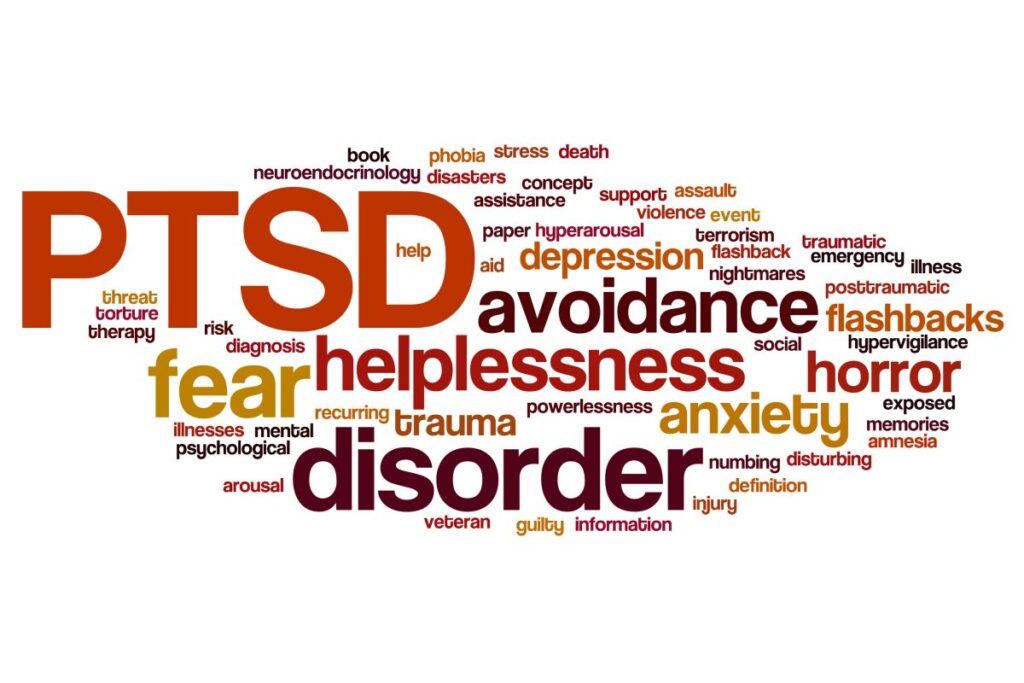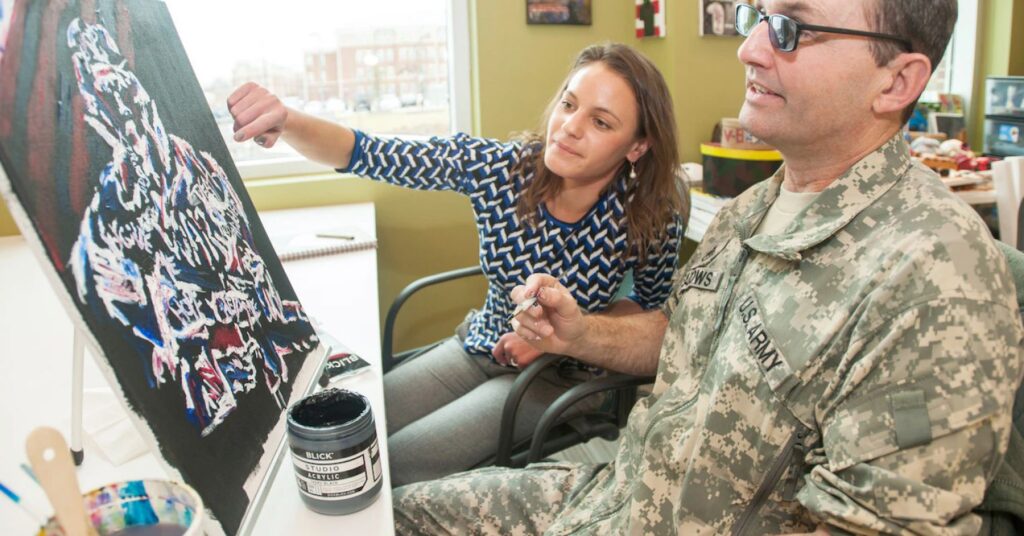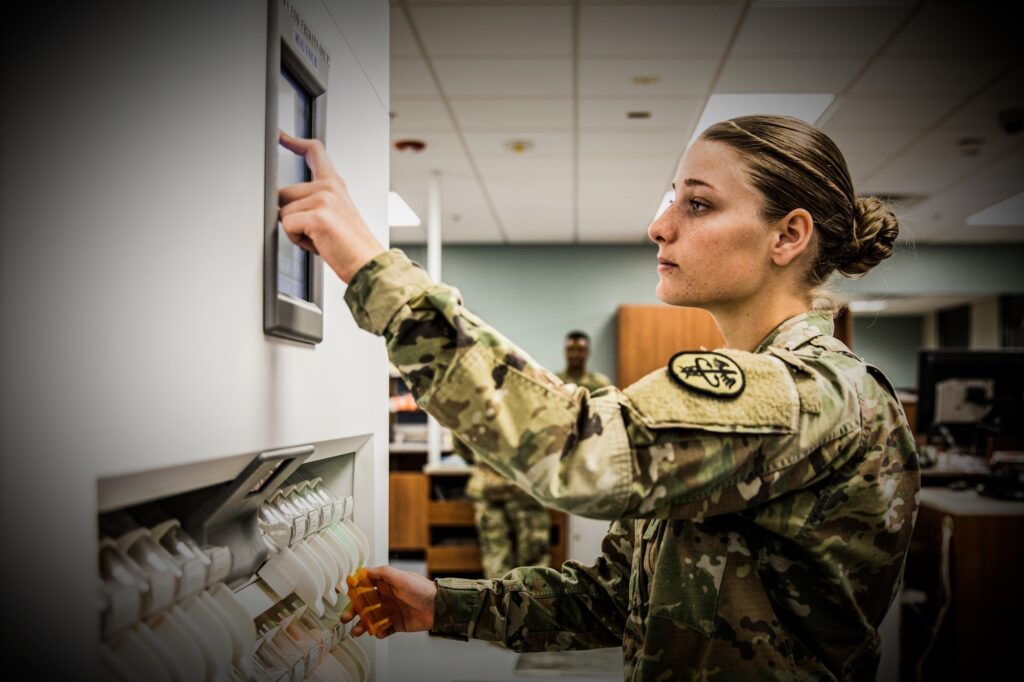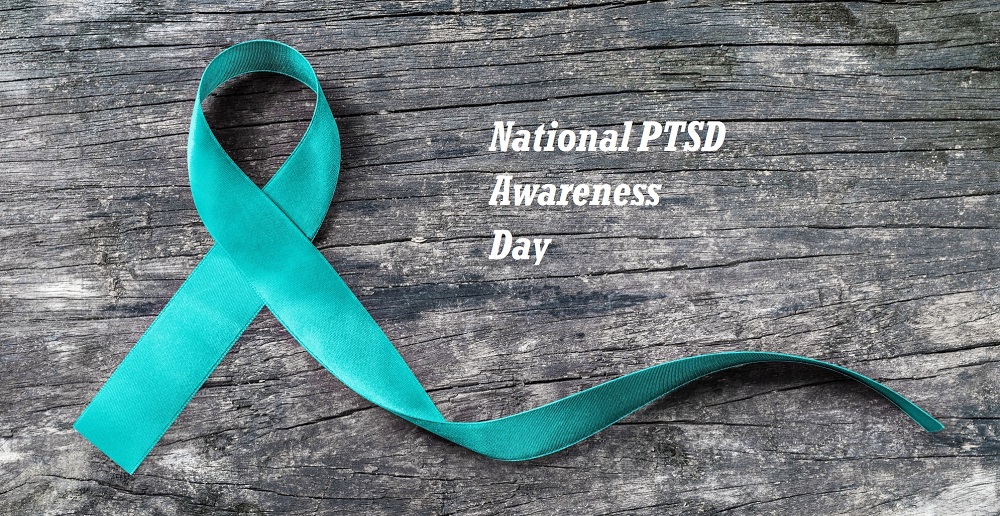If thoughts and feelings from a life-threatening event are upsetting you or causing problems in your life, you may have PTSD. According to the National Center for PTSD, post-traumatic stress disorder is a mental health condition that can occur after somebody has experienced a traumatic event. Going through a traumatic experience can actually affect areas of the brain, especially depending on when the trauma happened during development.
PTSD can occur in all people, of any ethnicity, nationality, or culture, and at any age. PTSD affects approximately 3.5 percent of U.S. adults every year, and an estimated one in 11 people will be diagnosed with PTSD in their lifetime. Women are twice as likely as men to have PTSD. The rate of PTSD is much higher among Veterans, with the VA estimating that up to 20% of Operation Enduring Freedom and Operation Iraqi Freedom Veterans, 10% of Gulf War Veterans, and 30% of Vietnam War Veterans have experienced PTSD.
PTSD has been known by many names in the past, such as “shell shock” during the years of World War I and “combat fatigue” after World War II. At TogetherWeServed, the largest online Veterans’ community, we have partnered with the Veterans Administration for National PTSD Awareness Day.
What Is PTSD?
Post-traumatic stress disorder (PTSD) is a mental health condition that is triggered by a terrifying event — either experiencing it or witnessing it. Symptoms may include flashbacks, nightmares and severe anxiety, as well as uncontrollable thoughts about the event. A traumatic event could be something that happened to you, or something you saw happen to someone else. Seeing the effects of a horrible or violent event can also be traumatic — for example, being a first responder after a terrorist attack.

After a dangerous event, it is natural to have some symptoms or even to feel detached from the experience, as though you are observing things rather than experiencing them. Symptoms of PTSD usually begin within 3 months of the traumatic incident, but they sometimes emerge later. According to the National Institute of Mental Health, to meet the criteria for PTSD, symptoms must last longer than 1 month, and they must be severe enough to interfere with aspects of daily life, such as relationships or work. The symptoms also must be unrelated to medication, substance use, or other illness.
The course of the illness varies: Although some people recover within 6 months, others have symptoms that last for a year or longer. People with PTSD often have co-occurring conditions, such as depression, substance use, or one or more anxiety disorders.
A healthcare provider—such as a psychiatrist, psychologist, or clinical social worker—who has experience helping people with mental illnesses can determine whether symptoms meet the criteria for PTSD.
To be diagnosed with PTSD, an adult must have all of the following for at least 1 month:
- At least one re-experiencing symptom
- At least one avoidance symptom
- At least two arousal and reactivity symptoms
- At least two cognition and mood symptoms
PTSD Treatment Options
The main treatment for people with PTSD is therapy; more specifically four variations of cognitive behavioral therapy (CBT). A meta-analysis on the effectiveness of therapy for PTSD found the average PE-treated patient fared better than 86% of patients in control conditions on PTSD symptoms at the end of treatment. PTSD therapy has three main goals:
- Improve the patient’s symptoms
- Teach skills to deal with PTSD symptoms
- Restore the patient’s self-esteem

The most common types of therapy to treat PTSD are:
Cognitive Behavioral Therapy (CBT)
Cognitive behavioral therapy focuses on the relationships among thoughts, feelings and behaviors; targets current problems and symptoms; and focuses on changing patterns of behaviors, thoughts and feelings that lead to difficulties in functioning.
Cognitive Processing Therapy (CPT)
Cognitive processing therapy is a specific type of cognitive behavioral therapy that helps patients learn how to modify and challenge unhelpful beliefs related to the trauma.
Cognitive Therapy
Derived from cognitive behavioral therapy, cognitive therapy entails modifying the pessimistic evaluations and memories of trauma, with the goal of interrupting the disturbing behavioral and/or thought patterns that have been interfering in the person’s daily life.
Prolonged Exposure
Prolonged exposure is a specific type of cognitive behavioral therapy that teaches individuals to gradually approach trauma-related memories, feelings and situations. By facing what has been avoided, a person presumably learns that the trauma-related memories and cues are not dangerous and do not need to be avoided.
In addition to therapy, medication may be effective for treating PTSD. The brains of people with PTSD process “threats” differently. They have an easily triggered “fight or flight” response. Constantly trying to shut that down could lead to feeling emotionally cold and removed.
Medications help people stop thinking about and reacting to what happened, including having nightmares and flashbacks. They can also help PTSD patients have a more positive outlook on life and feel more “normal” again.
For more information about PTSD treatment, please see your healthcare provider. The information shared in this article is not medical advice.
Innovative PTSD Treatments
Innovative approaches to treating PTSD are continuously evolving, offering new hope and effective solutions for individuals affected by this debilitating condition. One cutting-edge treatment gaining recognition is Eye Movement Desensitization and Reprocessing (EMDR), which helps patients process distressing memories through bilateral stimulation, facilitating adaptive resolution of trauma. EMDR has shown promising results in reducing PTSD symptoms and improving overall well-being.

Another innovative therapy is mindfulness-based interventions, such as Mindfulness-Based Stress Reduction (MBSR) and Mindfulness-Based Cognitive Therapy (MBCT). These practices promote present-moment awareness and acceptance, empowering individuals to cultivate resilience and manage PTSD symptoms effectively. Additionally, neurofeedback—a form of biofeedback that monitors brainwave activity—has emerged as a promising tool for regulating arousal levels and enhancing emotional regulation in PTSD patients.
Advancements in pharmacotherapy have also expanded treatment options for PTSD. While selective serotonin reuptake inhibitors (SSRIs) remain a cornerstone of pharmacological treatment, newer medications targeting specific neurotransmitter systems are being investigated for their potential to alleviate PTSD symptoms, improve mood stability, and enhance quality of life.
The History of PTSD
Post-traumatic stress disorder (PTSD) has a rich historical context rooted in the experiences of individuals exposed to traumatic events throughout history. While the formal diagnosis of PTSD emerged in modern psychiatry, its symptoms and impacts have been recognized across cultures and eras. During ancient times, symptoms resembling PTSD were documented among soldiers returning from war, highlighting the enduring psychological effects of combat and violence on individuals.

The term “shell shock” gained prominence during World War I, describing the psychological distress experienced by soldiers exposed to relentless artillery fire. The term evolved during subsequent conflicts, with “combat fatigue” and “war neurosis” used to depict the mental anguish endured by military personnel. These terms reflected evolving understandings of trauma and its psychological toll on individuals exposed to combat environments.
The American Psychiatric Association formally classified PTSD as a psychiatric disorder in 1980, codifying criteria for its diagnosis in the Diagnostic and Statistical Manual of Mental Disorders (DSM-III). This pivotal recognition marked a significant milestone in understanding and addressing the psychological consequences of trauma. Since then, advancements in research and treatment have expanded our understanding of PTSD’s neurobiological underpinnings and therapeutic interventions, fostering greater awareness and support for individuals affected by traumatic stress.
PTSD and Veterans
Because of the nature of their service, military Veterans face a particular risk of experiencing traumatic events and subsequently developing post-traumatic stress disorder (PTSD) symptoms. In a 2017 study involving 5,826 United States Veterans, 12.9% were diagnosed with PTSD. Even among Veterans, factors contributing to the onset of PTSD are highly ambiguous and individualized. There is no definitive way to determine the causes of this disorder in each case. When considering the rate of PTSD occurrence among Veterans by war or era, the VA reports the following statistics:
- Operations Iraqi Freedom (OIF) and Enduring Freedom (OEF): About 11-20 out of every 100 Veterans (or between 11-20%) who served in OIF or OEF have PTSD in a given year.
- Gulf War (Desert Storm): About 12 out of every 100 Gulf War Veterans (or 12%) have PTSD in a given year.
- Vietnam War: About 15 out of every 100 Vietnam Veterans (or 15%) were currently diagnosed with PTSD at the time of the most recent study in the late 1980s, the National Vietnam Veterans Readjustment Study (NVVRS). It is estimated that about 30 out of every 100 (or 30%) of Vietnam Veterans have had PTSD in their lifetime.

Other factors in a combat situation can add more stress to an already stressful situation. This may contribute to PTSD and other mental health problems. These factors include what one did in the war, the politics around the war, where the war is fought, and the type of enemy faced.
In addition to combat-related PTSD, roughly 1 in 4 women and 1 in 100 men utilizing the VA report instances of sexual harassment or assault, which can also result in prolonged traumatic stress.
Legal and Employment Challenges for Veterans with PTSD
Navigating legal and employment challenges is a significant issue for Veterans with PTSD, affecting their access to benefits, job opportunities, and quality of life. In 2022, over 1.7 million Veterans received treatment for PTSD, underscoring its prevalence.
Legal challenges often involve disability claims and appeals, with around 30% of PTSD claims initially denied, according to the NVLSP. Veterans struggle to find knowledgeable legal representation, prompting organizations like the NVLSP to handle over 10,000 cases annually to support them.

Employment difficulties for Veterans with PTSD include discrimination, stigma, and job instability. The 2023 unemployment rate for Veterans with service-connected disabilities, including PTSD, was 6.3%, compared to 4.0% for non-disabled Veterans, per BLS data. Only 28% of employers provide specific accommodations for PTSD, according to a SHRM survey.
Efforts to address these issues include specialized legal clinics, pro bono services, and legislative advocacy. Yale Law School’s Veterans Legal Services Clinic has helped over 500 Veterans secure benefits. The Supporting America’s Veterans Act of 2021 and VA’s partnership with the ABA, resolving over 1,000 cases in 2022, exemplify initiatives improving Veterans’ access to legal and employment support.
These collaborative efforts are essential for promoting the well-being of Veterans with PTSD and ensuring they receive the necessary support and benefits.
National PTSD Awareness Day: Events and Resources for Veterans
The Department of Veterans Affairs (VA) plays a pivotal role in supporting Veterans affected by PTSD, offering a comprehensive array of services and resources tailored to their unique needs.
Nonprofit organizations such as the Wounded Warrior Project and Operation Homefront complement VA services by offering specialized programs and initiatives. These initiatives encompass peer support groups, adaptive sports programs, and mental health workshops designed to empower Veterans and enhance their quality of life.

The Veterans Crisis Line and National Call Center for Homeless Veterans serve as critical lifelines, offering immediate assistance and support to Veterans in crisis or at risk of homelessness. These resources underscore the importance of proactive intervention and comprehensive care in addressing the multifaceted needs of Veterans affected by PTSD.
Unusual Facts About PTSD
Recent research indicates that various factors, including genetics and gender disparities, play significant roles in the development and manifestation of PTSD.
Genetics: Research indicates that genetics play a role in the development of PTSD. Studies suggest that certain genetic factors can make individuals more susceptible to PTSD following a traumatic event.
Gender Disparities: Women are about twice as likely as men to develop PTSD, despite men experiencing more traumatic events. This disparity is influenced by factors such as the types of trauma women are exposed to and biological differences in stress responses (source).
Comorbidity: PTSD often co-occurs with other mental health conditions. For example, about 80% of individuals with PTSD also have a co-occurring psychiatric disorder, such as depression or anxiety.
Resilience Training: Some military programs are implementing resilience training to help service members cope with stress before they face combat. This proactive approach aims to reduce the incidence of PTSD.
Animal-Assisted Therapy: Therapy animals, especially dogs, are being used increasingly to help individuals with PTSD. These animals can provide emotional support and help with anxiety and depression symptoms.
Understanding the multifaceted nature of PTSD, including its genetic underpinnings, gender differences, and high comorbidity rates, is crucial for developing effective treatments.
PTSD Statistics and Trends (2020-2023)
The prevalence and impact of PTSD have continued to evolve amid shifting societal dynamics and global events from 2020 to 2023. Comprehensive data and statistical insights highlight persistent challenges and emerging trends in PTSD diagnosis, treatment, and public health responses:
- 2020: An estimated 8 million adults in the U.S. experienced PTSD in a given year, underscoring the pervasive impact of trauma-related disorders across diverse populations. Among Veterans, PTSD prevalence remained disproportionately high, particularly among those who served in recent conflicts such as Operations Iraqi Freedom and Enduring Freedom.
- 2021: The COVID-19 pandemic exacerbated mental health challenges, including PTSD, due to heightened stress, social isolation, and disruptions to daily routines. Veterans confronted unique stressors, with increased demands for mental health services and innovative telehealth solutions to support remote access to care.
- 2022: Advancements in PTSD treatment modalities, including cognitive behavioral therapies and pharmacological interventions, contributed to improved therapeutic outcomes and enhanced symptom management. Virtual reality exposure therapy (VRET) emerged as a groundbreaking innovation, with clinical trials indicating that 70% of participants experienced a substantial decrease in PTSD symptoms after VRET sessions. This innovative approach not only enhanced symptom management but also demonstrated a 30% improvement in resilience among affected individuals, as measured by standardized psychological resilience scales.
- 2023: Research efforts identified several potential biomarkers for PTSD, including variations in cortisol levels, inflammatory markers, and specific genetic polymorphisms. These findings, published in leading psychiatric journals, suggested that up to 60% of PTSD cases could be predicted and personalized treatment plans developed based on these biomarkers.

By fostering collaboration across research, clinical practice, and community engagement, stakeholders can advance comprehensive strategies to mitigate the impact of trauma and promote holistic wellness for individuals affected by PTSD.
National PTSD Awareness Day
Each year on June 27th, National PTSD Awareness Day recognizes the effects post-traumatic stress has on the lives of those impacted by it. The United States Senate established PTSD Awareness Day in 2010 following Senator Kent Conrad’s efforts to designate a day of awareness as a tribute to Army Staff Sgt. Joe Biel of the North Dakota National Guard. Biel suffered from PTSD and took his life in April 2007 after returning to North Dakota following his second tour of duty in the Iraq War. Biel’s birthday, June 27th, was chosen to mark PTSD Awareness Day and honor his memory.

The observance of National PTSD Awareness Day not only strives to bring awareness to the public but to also educate and eliminate the stigma associated with PTSD. Unfortunately, many people who suffer from PTSD don’t seek treatment. Sometimes they simply fear the labels attached to PTSD. However, with support and understanding, we may all better understand the signs and provide better care.
How To Observe National PTSD Awareness Day
Even though PTSD treatments are effective, most people who have PTSD do not get the help they need. In observance of PTSD Awareness Day, we share simple but powerful ways to increase awareness and remove the stigma associated with PTSD. Here is what you can do
- Reach out to someone you know who struggles with PTSD. Let them know you care and are there to help.
- Answer 5 questions as part of the PTSD Self-Screen.
- Use #NationalPTSDAwarenessDay to share on social media.
- If you are a veteran, join the VA Mental Health and PTSD forum on TogetherWeServed.com

Together We Served, the largest online community for Veterans, supports PTSD awareness on National PTSD Awareness Day, as well as all other days of the year. Even a small step can help save lives.

0 Comments